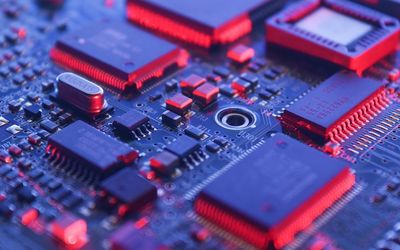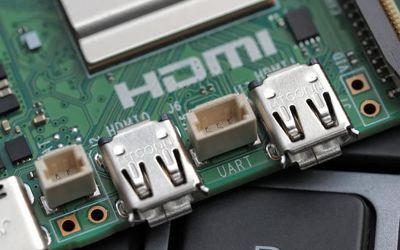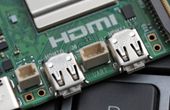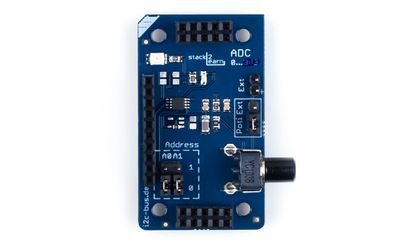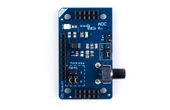Microchip Technology EVB-PCI11400 PCIe Switch Evaluation Board
A compact, high-performance demonstration and evaluation board for PCI11400 Switch.
Technical Specifications
| Product Type | Development and Evaluation Board |
| Operating Voltage | 3.3 and 5 |
| Communication | RS232/485, I2C, SPI, UART |
| Package | 132-pin DQFN |
| Operational Frequency | 25 MHz |
| Applications | Embedded Systems |
| Compatible With | PCI11400 |
Overview
Microchip Technology EVB-PCI11400 PCIe Switch Evaluation board is a demo and evaluation platform for the Microchip PCI11400 switch. The board features a single-chip PCIe switch with programmable I/O and an integrated USB 3.2 Gen 2 host controller. With support for various communication protocols, including I2C, UART, SPI, and GPIO, the board can integrate with a variety of sensors and I/O devices for reading and writing digital and analog values. The evaluation kit also features RS232 and RS485 channels, as well as 4 PCIe slot connectors. It’s compatible with Windows and Linux operating systems, catering to a wide range of embedded applications involving the PCIe11400 switch.
High Communication Bandwidth for Speed-Sensitive Devices
The Microchip Technology EVB-PCI11400 PCIe Switch Evaluation board supports high-speed operations thanks to an exceptional data transfer speed of up to 8 Giga transfers per second (GT/s), essentially transferring up to 8 billion bits per second. The transfer rate allows the board to communicate with high-performance computers and advanced I/O modules for faster communication.
For downstream operation, the board features 4 USB host ports. Three of these ports feature a USB Type-A 2.0 connector, while the remaining port features a USB Type-C 3.2 Gen 2 SuperSpeed+ downstream port. With a 4-lane upstream port, the board can support a high transfer bandwidth of up to 32 GT/s. Likewise, the 1-lane downstream port can receive up to 8GT/s.
Also, there are four RS232/485 channels, allowing seamless integration with sensors and external communication devices.
Support for Various Protocols and Extended Hardware Capabilities
The evaluation board operates with an onboard 25MHz crystal. It operates on a single voltage 12 Volts regulated external power supply and features voltage regulators for different levels, including:
5 Volts
3.3 Volts
1.1 Volts
Each regulator features a dedicated LED indicator along with indicators for USB power. It has a 132-pin Dual Row QFN package. Moreover, there is an optional I2C and SPI target configuration bus. Thanks to the onboard I2C serial EEPROM, developers can configure the EVB system configurations functionalities.
Since the board features optimum support for different communication modes, including SPI, I2C, UART, and GPIO, it supports the integration of a wide range of peripherals and I/O modules with the microcontroller. There are multifunction GPIOs, programmable pin multiplexers, an SPI slave interface, and an SMBus slave and master interface. Also, the board contains some efficient power management features, such as the PCIe 3.1 LPSS (Low Power Sub States). These states can either snooze or turn off the dev board, protecting the internal circuitry from unforeseen damages.
Therefore, the evaluation board can be used for embedded applications, robotics, digital electronics, etc. It operates with Linux and Windows operating systems, making it fairly easy to program.
Where to find it

Mouser Electronics
Mouser Electronics is a worldwide leading authorized distributor of semiconductors and electronic components.



